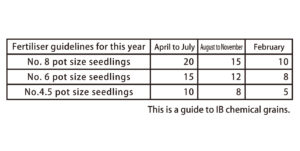Regarding Blueberries
Hello everyone!
My name is Naoki YAMASHITA, and Iʼm a producer of blueberry seedlings in Anjo City, Aichi Prefecture.We specialize in producing robust seedlings that allow anyone to experience the delight of planting and raising their own blueberries.
Blueberries are an attractive and delightful fruit tree that can thrive in limited spaces, such as gardens & terraces, balconies and even pots, and can be harvested as soon as one to two years after planting.They are highly beneficial for eye health, being rich in anthocyanins, a powerful nutrient with antioxidant properties that also helps maintain clean, healthy skin.
We produce hardy, potted seedlings that make it easy for anyone to enjoy growing and harvesting their own blueberries.In particular, we focus on raising seedlings with strong, sturdy trunks resilient to minor impacts.
There are two main types of blueberries ‒ the highbush variety, suitable for colder regions, and the rabbit-eye variety, ideal for warmer climates.
The highbush variety produces larger berries and can be harvested earlier in the year, starting in mid-June, while rabbit-eye varieties are harvested later, starting in mid-July.
Rabbit-eye varieties, however, tend to be more resilient and require less care to grow than highbush varieties.
Moreover, efforts in selective breeding have led to new, easier-to-grow varieties, such as the southern highbush variety, which is suitable for raising in warmer climates, and the northern highbush, which thrives in cooler temperatures.
In Japan’s western and Kanto regions, we typically recommend southern highbush varieties such as Sharp Blue, Georgia Gem, O’Neal, or Gulf Coast.For the northern regions of Kanto and beyond, we recommend several hardy Northern Highbush varieties that produce large fruit with excellent flavour (such as Wyman’s, Blue Magician, and Blue Reca).All are sturdy trees that can start bearing fruit within the year.
We invite you to savour the flavour and delight of cultivating your very own homegrown blueberries.







